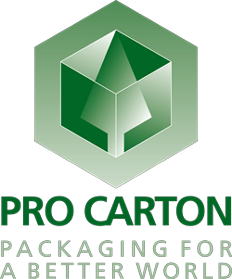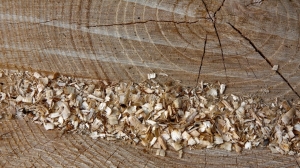EURACTIV – 12th July 2022:
This article is part of our special report Packaging: The fibre edition.
Makers of cartonboard, corrugated board, and other wood fibre-based packaging are campaigning to get the renewability and recyclability of their product recognised under EU law. They also warn against EU plans to introduce mandatory recycled content targets for new products, saying this could “disrupt a system that is already working very effectively”.
Mike Turner is the managing director of ECMA, the European Carton Makers Association. He is also the chair of Fibre Packaging Europe (FPE), an informal coalition of eight trade associations representing industries involved in forestry, pulp, paper, board and carton production and recycling from across Europe.
Turner spoke to EURACTIV on the sidelines of Fibre Packaging Europe’s first public event and the ceremony of the 8th Edition of the European Paper Recycling Awards.
INTERVIEW HIGHLIGHTS
- In contrast to metal and plastic, fibre-based packaging is renewable and the industry would like to see this recognised in EU legislation, Turner says;
- Fibre packaging industry aims to reach a 90% recycling rate by 2030, by focusing on higher collection and improving the recyclability of multi-layered packaging like beverage cartons;
- That said, the industry “would urge against policymakers legislating to reduce the range of packaging formats” as a way to improve recyclability, Turner warns;
- 82% of fibre packaging is already being recycled today and introducing mandatory targets for recycled content would “disrupt a system that is already working very effectively,” he argues;
- Industry studies show that single-use paper packaging has a lower environmental footprint than re-usable packaging, which needs to be collected and washed before it is placed back on the market;
- “Fibre-based packaging is not re-usable, it’s a highly recyclable format,” he says.
In contrast to metals or plastics that are being used in packaging, paper and board are renewable materials. How can that be reflected in policy?
We are looking to keep fossils in the ground whereas fibre is renewable. So we would like to see the renewability of fibre recognised in the legislation.
But also, the fact that the high recycling rates of fibre based packaging is 82% according to the most recent published Eurostat figure. In terms of volume of packaging, more fibre is recycled than all other packaging formats combined.
How can you increase those rates? Is it even possible?
Yes, it is. The 4evergreen alliance, which represents the whole value chain, is working together to increase the recycling rates of fibre packaging. The aspiration is to reach a 90% recycling rate by 2030.
This can be done by focusing on some of the more demanding packaging formats to recycle, for example fibre packaging that has a plastic layer for food safety. That layer of plastic performs a vital food safety function. And what we’re aiming for is to increase the recycling rate of those.
Another area of legislation that we are looking into is collection. Because great recycling starts with great collection. That’s why we are calling on the European Commission to increase the convergence of collection systems across Europe.
At the moment, there are a whole range of different collection systems across EU countries. And We would like to see a convergence of collection systems, with paper being collected as a separate item.
There is a high economic demand for fibre packaging, a lot of people want to recycle it. And we would like to see a better sorted waste stream so that the material is uniform regardless of where it is collected in Europe.
You spoke about the inner lining of beverage cartons, which contain a layer of plastic for food preservation. How can the recyclability of this type of packaging be improved? Is it through eco design?
It’s already recyclable, they already can be recycled in standard recycling mills. It’s already happening today.
What we are asking policymakers is to ensure greater convergence of collection systems in order to ensure greater volumes are collected, which will make it easier to get to that material and recycle it.
Eco-design is indeed another really important factor to increase recycling rates of things like multi-layered packaging, which contain a plastic barrier to preserve food or beverage. And that means designing recyclability into the package item.
Can that still be improved?
Yes, it is being improved. The 4evergreen alliance, for example, two months ago issued design for recycling guidelines on how you can design recyclability into fibre packaging. All these things combined will help us increase the recycling rate.
The European Commission has suggested restricting choice when it comes to packaging so that there’s more standardisation in the industry and therefore more volumes of waste that can be collected at the end of life and made available for recycling. Is that something you would support as an industry?
It’s a tough one to answer. Designing recycling into packaging will indeed possibly reduce the variety of different packaging formats we have these days. But I think we would urge against policymakers legislating to reduce the range of packaging formats.
As I said already, 82% of fibre packaging is being recycled already, which is more in volume terms than all other packaging types combined. So we are already a very high performing system, but we want to take it higher.
In the context of the revision of the packaging and packaging waste directive, the European Commission often talks about improving the rates of reuse and recycling, for instance, with mandatory targets for recycled content going into new products. Is that something you would support as the paper packaging industry?
We wouldn’t support this for the paper or fibre packaging industry. As I have already mentioned, the recycling rate is already at a very high level, and introducing a mandatory recycled content target is going to disrupt a system that is already working very effectively.
We can see the benefits of having mandated recycled contents for other types of packaging where the recycling rate is not so high. But not in fibre packaging where we already have a really high rate of recyclability.
Coming back to the notion of renewability, the Commission likes to keep a technology neutral approach in how it regulates the packaging sector. So how could the renewability of fibre-based packaging be recognised? Is it for example in the eco-modulation of EPR fees? Or do you see other ways in which this can be recognised?
Eco-modulation is indeed a way to incentivise easy-to-recycle packaging formats and penalise more challenging packaging formats. I think that will naturally move the industry towards easier-to-recycle and more renewable types of packaging. So yes, I think eco-modulation of EPR fees is one of ways of achieving this.
One of the Commission’s key objectives in the revision of the packaging and packaging waste directive is to improve re-use as a preferable option to recycling, in line with the waste hierarchy. What are your views on this?
We recognise reuse has a place. But instead of bringing in mandated ratios for reusable packaging, we are asking the Commission to use lifecycle analysis on a case-by-case basis before deciding on whether a single-use or reusable packaging is the best option.
In many cases, single-use can be a better option. Taking single use fibre-based packaging such as that used in the quick service restaurant sector , life cycle analysis has demonstrated it has a lower environmental footprint together with significantly reduced water usage compared to reusable packaging, which needs to be collected, washed and placed back on the market
Other LCAs have been done for single-use fibre packaging, including one recently for recyclable corrugated packaging which demonstrated it out-performs reusable formats overall on environmental indicators.
So in your view, re-use for fibre-based packaging doesn’t really make sense?
Fibre-based packaging is not re-usable, it’s a highly recyclable format. And as part of the revision of the Packaging and Packaging Waste Directive (PPWD), we are asking the Commission to make decisions based on lifecycle assessments. Because decisions must be based on facts, not on emotions. And when we have the facts, we can make the right decisions.
With the Ukraine war, food security is becoming an issue again. And this draws all our minds to the essential role that packaging plays in distributing food, making sure it gets safely to the consumer.
Good, fit for purpose packaging is needed more than ever before at the moment, as food supply and potential food shortages becomes an increasing issue.
********************




